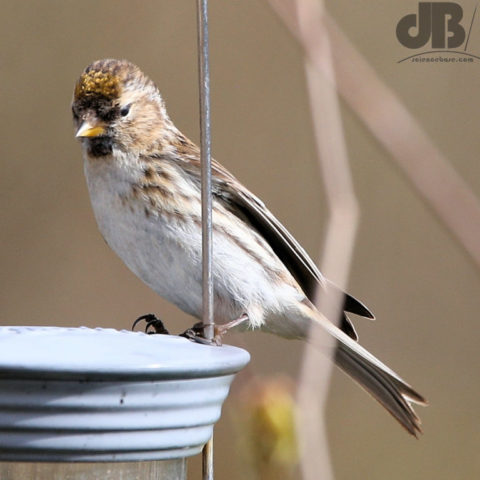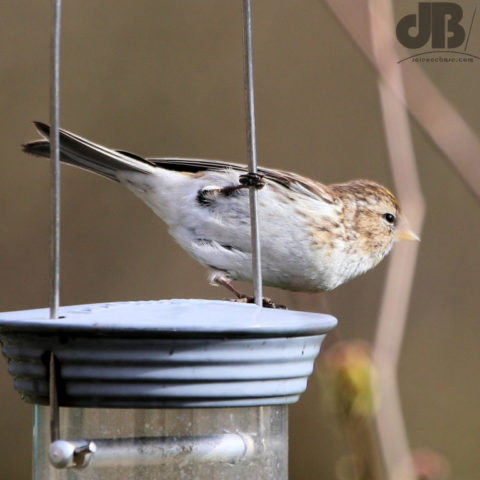Having already come unstuck in identifying a Redpoll that alighted on our nijer seed feeder within minutes of my hanging the feeder in our beech tree, I’ve now found another issue with this type of bird. It’s not necessarily well known that the Lesser Redpoll and the Common (Mealy) Redpoll and the Hoary Redpoll are actually the same species and that there are also sub-species and hybrids that are genetically the same as each other. Referring to one as a specific type is thus something of a taxonomic faux pas these days based on the DNA. That said, genomics has found differences in gene expression but no genetic divergence, this would suggest that there might be different plumage forms that are fairly recent, but they come from a single interbreeding lineage and do not represent distinct species.
Anyway, I wrote a brief blog about Redpolls in February 2018 and have since seen Redpolls in flocks on several reserves, but none have shown again in our garden.

Most recently, I was photographing the nuthatches, tits, and finches on feeders in the kitchen garden of friends’ smallholding, when what looked like a pair of Redpolls arrived. Except, they didn’t have the familiar red cap. They looked like Redpolls but with a golden cap. My first thought was that they were perhaps juvenile Redpolls or some kind of genetic mutation.

One contact thought, at first glance, that they were Snow Buntings. But, another Jim Welford on the British Facebook Birders group, suggested that red is not a natural colouration in Redpolls and that they can convert carotenoids in their diet to a pigment, but if they lack the appropriate carotenoids or are ill when their moult is underway, the red colouration will be absent or another colour will show. It also seems to be something that can happen with Linnets (Carduelis cannabina) which are also famously flushed red on their breast. Welford pointed me to a useful book by Tim Birkhead, The Red Canary, which apparently discusses the colouration issue.
Birder Andy Warr had this to say about the so-called Goldpoll some time ago:
First-winters and female Lesser, Mealy and Arctic Redpolls generally show a crimson cap, with varying degrees of brightness, though it is not uncommon for some to show orange, copper, yellow, even brownish caps, or any combination of the aforementioned.
Warr adds that a gold cap is quite regularly seen in first-winter birds and adult females.